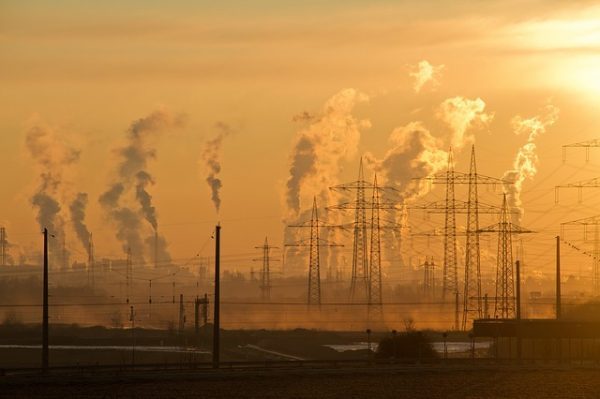The pollution in Goa’s air is almost visible to the naked eye. One can especially see this when driving over the Mandovi bridge into Panjim. It’s almost as though the state capital is covered in a faint haze. Only as one gets closer does he realize that it’s pollution and not mist. Today’s article in the Navhind Times has only confirmed what a lot of people have feared. The air quality has gotten worse and could soon leave the city’s residents breathless.
Deteriorating air quality does not spell good news for anyone
The Goa State Pollution Control Board has compiled an analysis report on air quality for 2017-18. This report shows that the air quality in Goa’s towns and cities is deteriorating. Out of all of Goa’s major towns, Vasco appears to be the most polluted. Ponda, Panaji, Mapusa, and Margao follow in quick succession. All this is happening due to the amount of construction as well as an increase in the number of vehicles on the roads.
Most monitoring stations recorded an Air Quality Index(AQI) above 100 and 201-classified ‘moderate’. A few other locations recorded the air quality as ‘poor’.
According to the GSPCB analysis, Panaji, Vasco, Mapusa, Margao, and Ponda do not comply with the annual permissible concentration of PM10 of 40µg/m³. This as prescribed by the Central Pollution Control Board under the National Ambient Air Quality Standards.
PM2.5 concentration was also found exceeding in Panaji, Vasco, and Mapusa.
Among the cities and towns where data was measured, the ambient air quality was within the NAAQ limits during monsoon.
The report also shows that the concentration level of sulphur dioxide is within permissible limits of 80 mpmc. However, nitrous oxide levels have shown a slow but steady increase.
Increase in vehicles on Goa’s roads are one reason for the air pollution
The level of NOX, which is released from a vehicle, was recorded between 10µg/m³ and 19µg/m³ from April 2017 and March 2018.
Vasco’s air pollution is the result of a combination of vehicular emissions and the burning of waste in the open. As a result, the level of PM10 exceeded twice in November last year. It also exceeded permissible levels between January and March this year, which was over and above 240 mpmc.
Ponda is not far behind either.. The levels of PM10 for the period from January and March this year were 50-60% higher than the daily standard and almost thrice the annual standard.
While the air quality was fine between June and September last year, it deteriorated in November due to lots of vehicular movement. The cause was all the dust being stirred up on the roads.
Panjim city ranks high on the scale of poor air quality. With the amount of daily traffic, it was no surprise that in the last 8 months, the air pollution was at an all-time high.
The city air quality was marked between ‘moderately polluted’ and ‘satisfactory’ on the air quality index. In May, last year the air quality became worse – it was recorded going down from ‘moderately polluted’ to ‘very poor’.
Mapusa and Margao also showed fluctuating readings on the AQI. The amount of construction and road work in Mapusa resulted in PM10 hovering between 120mpmc and 218mpmc from November 2017 and March 2018.
The air quality monitoring stations in Margao recorded ‘satisfactory’ readings as of March.
In October 2017 the PM10 was recorded at 116 mpcm giving ‘moderately polluted’ reading.
Information credit – http://www.navhindtimes.in/air-quality-worsening-in-goas-cities-and-towns/
ItsGoa/JUNE/KDGP


